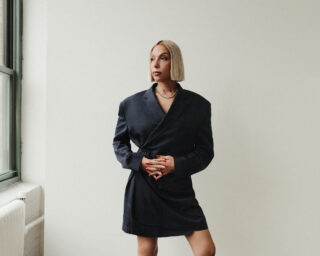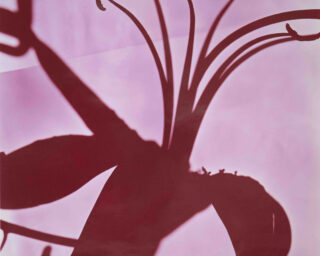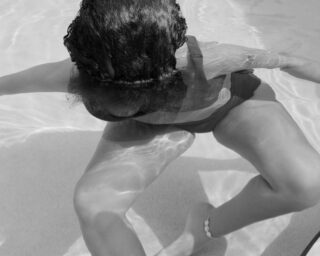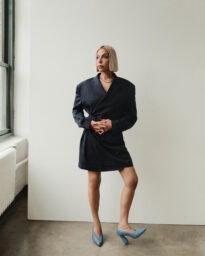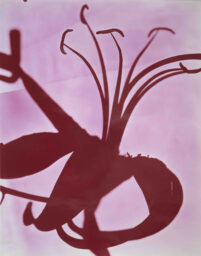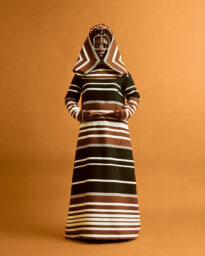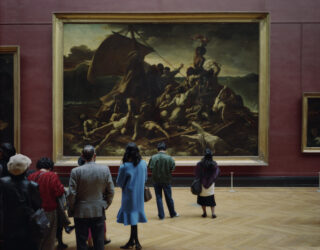Armory Africa Focus Preview: A Conversation with Namsa Leuba
Namsa Leuba’s worlds are colorful configurations, detailed and evocative. Her photographs take the viewer to the farthest reaches of glamour—an unapologetic glamour, especially since she orchestrates the picturing of alluring black bodies and positions them inside “Western aesthetic choices,” to use her formulation. For a Swiss-Guinean artist, a Western gaze might be inescapable, but so is the beauty of her sets, costumes, and fashionable Nigerian models. Bodies, in most of her work, become amenable, draped and painted over, embellished and ennobled. In Ya Kala Ben, the exorcising rituals of a Guinean village are depicted with the appeal and mystery of a performance. In The African Queens and Cocktail, Leuba’s models are positioned against resplendent backgrounds, costumed luxuriantly while they bend, kneel, crouch, or stand. I spoke with Leuba about her most recent work in advance of her presentation at the Armory Show’s Focus: African Perspectives. —Emmanuel Iduma
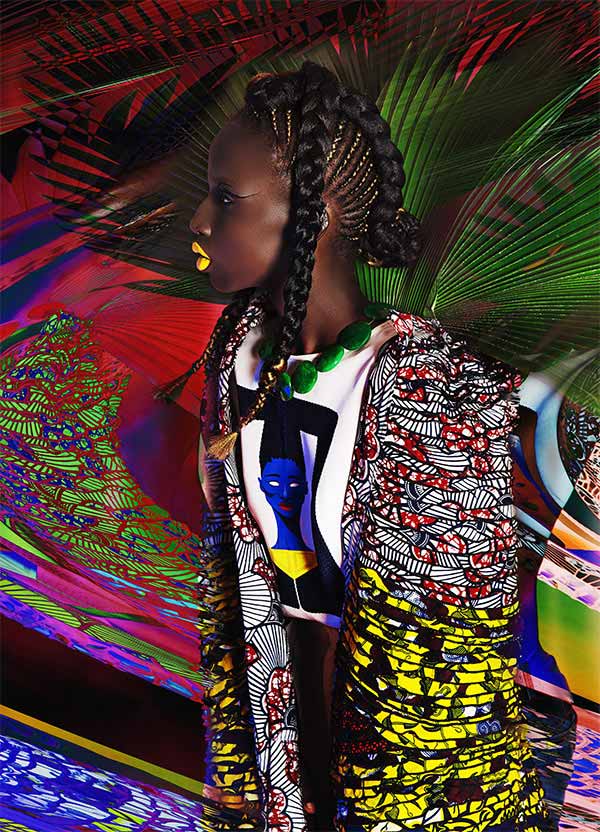
Namsa Leuba, Sarah, from the series NGL, 2015. Courtesy the artist and Art Twenty One, Lagos
Emmanuel Iduma: I’d like us to begin with geography. This year, the Armory show has invited fourteen galleries across the continent to participate in special section of the fair. Your work will come to New York courtesy of Art Twenty One, a gallery based in Lagos. You’re Swiss-Guinean, represented by a Nigerian gallery, and you’ll be shown in New York’s premier international art fair. What are your thoughts about the movement of your work in this way?
Namsa Leuba: I feel quite lucky to be represented by my gallery in this event. For me, it’s interesting that I was born in Switzerland but always grew up with African culture and Africans around me. My mother is from Guinea and I always went there as a child. I think I feel much better when I’m there than in Switzerland. It’s totally different, because when I’m in Africa, I study other perspectives. Everywhere I go I feel at home, because there’s very special interest. Even though the cultures are totally different—in Nigeria, Guinea, and South Africa—there’s something unique.
I think my work has a place in New York, since all of my work is focused on African identity through Western eyes. Why is it through Western eyes? Because I was born and educated in the West. I studied in Swiss schools (a bachelor’s in photography and a master’s in art direction) and at the School of Visual Arts in New York (the Photo Global program). I can’t say through African eyes, since that depends on your education, which informs your outlook on the world. My cousin who lives in Guinea will have another perspective and outlook on creativity, art, photography.

Namsa Leuba, Damien, from the series NGL, 2015. Courtesy the artist and Art Twenty One, Lagos
Iduma: Are you making new work for the Armory presentation?
Leuba: Yes. I’m very excited about it. Last year I spent a month in Lagos, from July to August 2015. I was in a residency at my gallery, Art Twenty One. We’re going to show a part of my new work.
Iduma: Which is from Lagos?
Leuba: Yes, it’s from Lagos. I worked with Nigerian fashion designers—such as TZar, Tokyo James, Re Bahia, I Am Isigo, Deco, Maxivive—and I used their clothes for my pictures.

Namsa Leuba, Kenny, from the series NGL, 2015. Courtesy the artist and Art Twenty One, Lagos
Iduma: Is this a continuation of your research on African identity through Western eyes?
Leuba: Of course, but in a different way. And I’m also going to show Zulu Kids (2014), which I did two years ago.
Iduma: Could you talk about your preoccupations with this new work?
Leuba: The title is New Generation Lagos (NGL), which is a play on the letters “NG,” since it could also mean Nigeria. I wanted to do something a little different, more related to fashion, although it’s art. I’m at the borderline, similar to what I did with The African Queens (2012), or Cocktail (2012). So there’s a lot of color. This time I made portraits of people, of their faces. Some of the pictures can be a little bit psychedelic as well.

Namsa Leuba, Layo, from the series NGL, 2015. Courtesy the artist and Art Twenty One, Lagos
Iduma: In your photographs, I get the sense that color isn’t merely a technical choice, particularly because you often construct environments for your subjects. What do you have in mind when you’re assembling colors for the costumes and when you’re choosing what to photograph?
Leuba: You know, when I was making Ya Kala Ben (2011), a lot of people said there was something related to fashion stylistically. For all of my work, I try to bring the models inside Western aesthetic choices, even the models for the work I make in Africa. I like to play with colors because they bring a different sensation to the pictures. People play with different patterns, layers, colors in South Africa, Guinea, Nigeria, Morocco. I like that. It gives some volume.
Iduma: Tell me more about what you mean by “Western aesthetic choices.”
Leuba: The codes and symbols of culture and society are different in Europe. In the West, people who come to look at my pictures would like to look at them with comfort. Most of the time the viewer stays on the surface. But in Guinea people see different parameters, and sometimes there are violent reactions because they see my work as a sacrilege. While making Ya Kala Ben, I was arrested by the police!

Namsa Leuba, Damien II, from the series NGL, 2015. Courtesy the artist and Art Twenty One, Lagos
Iduma: How do you work with your subjects?
Leuba: For all my artwork I do my casting on the streets. I prefer to work with unprofessional people. This is important, because of all the people you’re going to see in NGL, there’s only one or two who are professional models, who came to my casting and said they’d like to pose for me. Otherwise I like to work with people on the street. This is what happened in Nigeria, as in all of my work. I like to be in contact with people. There is a long and very interesting process of exchange that I like.
Emmanuel Iduma, a Nigerian writer and art critic, is the author of the novel Farad (2012) and co-editor of Gambit: Newer African Writing (2014). He co-founded Saraba magazine, and is the managing editor of The Trans-African.
Namsa Leuba’s work will be on view at the 2016 Armory Focus: African Perspectives in New York from March 3–6, 2016.










